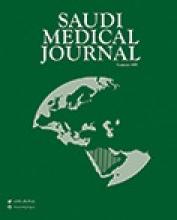Abstract
OBJECTIVE: To compare the bone scintigraphy findings with a carcinoembryonic antigen (CEA) and cancer antigen 15-3 (CA 15-3) levels in breast carcinoma patients. We also investigated the relationship between anatomical bone type and its effect on tumor marker levels.
METHODS: The study was consisted of retrospective evaluation of 120 bone scans of patients with breast carcinoma admitted to the Nuclear Medicine Department, Medical Faculty, Hacettepe University, Ankara, Turkey between January 2003 and December 2004. The mean age of the patients was 54.7 years. We grouped the results of the bone scans into 3 as normal, equivocal and metastatic. Carcinoembryonic antigen and CA 15-3 levels were recorded from the files of the patients. Upper cut levels of 4.8 U/ml for CEA and 38 U/ml for CA 15-3 was accepted. Metastatic bone areas were distributed according to their anatomical location as long, short, flat, irregular and sesamoid and effect of bone type on tumor marker was investigated.
RESULTS: In 16 of the patients, bone scintigraphy revealed metastases. Sixty-one patients had normal scans and in 47 patients metastases could not be ruled out. In patients with metastases, CA 15-3 was elevated in 8 and CEA was higher than the upper limit in 6. For CEA and CA 15-3, the anatomical type of bone has no any effect on serum tumor marker concentration between patients with normal and elevated levels of tumor markers in metastatic patients.
CONCLUSION: Tumor markers are not solely enough in predicting bone metastases. Bone scintigraphy and tumor markers should be both used in management of patients with breast carcinoma. The anatomical type of bone has no any effect on elevation of serum tumor marker concentration.
- Copyright: © Saudi Medical Journal
This is an open-access article distributed under the terms of the Creative Commons Attribution-Noncommercial-Share Alike 3.0 Unported, which permits unrestricted use, distribution, and reproduction in any medium, provided the original work is properly cited.






